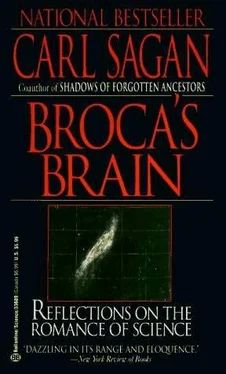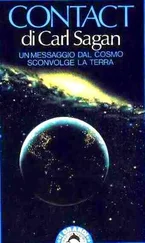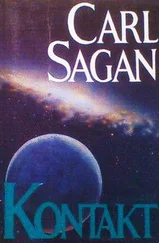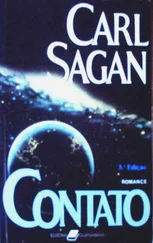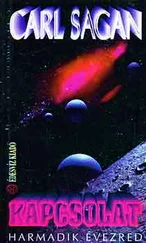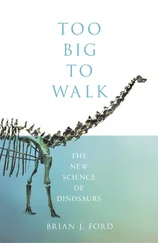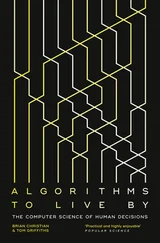Carl Sagan - Broca's Brain - The Romance of Science
Здесь есть возможность читать онлайн «Carl Sagan - Broca's Brain - The Romance of Science» весь текст электронной книги совершенно бесплатно (целиком полную версию без сокращений). В некоторых случаях можно слушать аудио, скачать через торрент в формате fb2 и присутствует краткое содержание. Жанр: Физика, на английском языке. Описание произведения, (предисловие) а так же отзывы посетителей доступны на портале библиотеки ЛибКат.
- Название:Broca's Brain: The Romance of Science
- Автор:
- Жанр:
- Год:неизвестен
- ISBN:нет данных
- Рейтинг книги:3 / 5. Голосов: 1
-
Избранное:Добавить в избранное
- Отзывы:
-
Ваша оценка:
- 60
- 1
- 2
- 3
- 4
- 5
Broca's Brain: The Romance of Science: краткое содержание, описание и аннотация
Предлагаем к чтению аннотацию, описание, краткое содержание или предисловие (зависит от того, что написал сам автор книги «Broca's Brain: The Romance of Science»). Если вы не нашли необходимую информацию о книге — напишите в комментариях, мы постараемся отыскать её.
Broca's Brain: The Romance of Science — читать онлайн бесплатно полную книгу (весь текст) целиком
Ниже представлен текст книги, разбитый по страницам. Система сохранения места последней прочитанной страницы, позволяет с удобством читать онлайн бесплатно книгу «Broca's Brain: The Romance of Science», без необходимости каждый раз заново искать на чём Вы остановились. Поставьте закладку, и сможете в любой момент перейти на страницу, на которой закончили чтение.
Интервал:
Закладка:
THE GREAT INTEREST of youngsters in science fiction is reflected in films, television programs, comic books and a demand for science-fiction courses in high schools and colleges. My experience is that such courses can be fine educational experiences or disasters, depending on how they are done. Courses in which the readings are selected by the students provide no opportunity for the students to read what they have not already read. Courses in which there is no attempt to extend the science-fiction plot line to encompass the appropriate science miss a great educational opportunity. But properly planned science-fiction courses, in which science or politics is an integral component, would seem to me to have a long and useful life in school curricula.
The greatest human significance of science fiction may be as experiments on the future, as explorations of alternative destinies, as attempts to minimize future shock. This is part of the reason that science fiction has so wide an appeal among young people: it is they who will live in the future. It is my firm view that no society on Earth today is well adapted to the Earth of one or two hundred years from now (if we are wise enough or lucky enough to survive that long). We desperately need an exploration of alternative futures, both experimental and conceptual. The novels and stories of Eric Frank Russell were very much to this point. In them, we were able to see conceivable alternative economic systems or the great efficiency of a unified passive resistance to an occupying power. In modern science fiction, useful suggestions can also be found for making a revolution in a computerized technological society, as in Heinlein’s The Moon Is a Harsh Mistress.
Such ideas, when encountered young, can influence adult behavior. Many scientists deeply involved in the exploration of the solar system (myself among them) were first turned in that direction by science fiction. And the fact that some of that science fiction was not of the highest quality is irrelevant. Ten-year-olds do not read the scientific literature.
I do not know if time travel into the past is possible. The causality problems it would imply make me very skeptical. But there are those who are thinking about it. What are called closed time-like lines-routes in space-time permitting unrestricted time travel-appear in some solutions to the general relativistic field equations. A recent claim, perhaps mistaken, is that closed timelike lines appear in the vicinity of a large, rapidly rotating cylinder. I wonder to what extent general-relativists working on such problems have been influenced by science fiction. Likewise, science-fiction encounters with alternative cultural features may play an important role in actualizing fundamental social change.
In all the history of the world there has never before been a time in which so many significant changes have occurred. Accommodation to change, the thoughtful pursuit of alternative futures are keys to the survival of civilization and perhaps of the human species. Ours is the first generation that has grown up with science-fiction ideas. I know many young people who will of course be interested but in no way astounded if we receive a message from an extraterrestrial civilization. They have already accommodated to that future. I think it is no exaggeration to say that if we survive, science fiction will have made a vital contribution to the continuation and evolution of our civilization.
PART III. OUR NEIGHBORHOOD IN SPACE
CHAPTER 10

Like a shower of stars the worlds whirl, borne along by the winds of heaven, and are carried down through immensity; suns, earths, satellites, comets, shooting stars, humanities, cradles, graves, atoms of the infinite, seconds of eternity, perpetually transform beings and things.
CAMILLE FLAMMARION,
Popular Astronomy , translated by J. E. Gore
(New York, D. Appleton & Company, 1894)
IMAGINE THE EARTH scrutinized by some very careful and extremely patient extraterrestrial observer: 4.6 billion years ago the planet is observed to complete its condensation out of interstellar gas and dust, the final planetesimals falling in to make the Earth produce enormous impact craters; the planet heats internally from the gravitational potential energy of accretion and from radioactive decay, differentiating the liquid iron core from the silicate mantle and crust; hydrogen-rich gases and condensible water are released from the interior of the planet to the surface; a rather humdrum cosmic organic chemistry yields complex molecules, which lead to extremely simple self-replicating molecular systems-the first terrestrial organisms; as the supply of impacting interplanetary boulders dwindles, running water, mountain building and other geological processes wipe out the scars attendant to the Earth’s origin; a vast planetary convection engine is established which carries mantle material up at the ocean floors and subducts it down at the continental margins, the collision of the moving plates producing the great folded mountain chains and the general configuration of land and ocean, glaciated and tropical terrain varies continuously. Meanwhile, natural selection extracts out from a wide range of alternatives those varieties of self-replicating molecular systems best suited to the changing environments; plants evolve that use visible light to break down water into hydrogen and oxygen, and the hydrogen escapes to space, changing the chemical composition of the atmosphere from reducing to oxidizing; organisms of fair complexity and middling intelligence eventually arise.
Yet in all the 4.6 billion years our hypothetical observer is struck by the isolation of the Earth. It receives sunlight and cosmic rays-both important for biology-and occasional impact of interplanetary debris. But nothing in all those eons of time leaves the planet. And then the planet suddenly begins to fire tiny dispersules throughout the inner solar system, first in orbit around the Earth, then to the planet’s blasted and lifeless natural satellite, the Moon. Six capsules-small, but larger than the rest-set down on the Moon, and from each, two tiny bipeds can be discerned, briefly exploring their surroundings and then hotfooting it back to the Earth, having extended tentatively a toe into the cosmic ocean. Eleven little spacecraft enter the atmosphere of Venus, a searing hellhole of a world, and six of them survive some tens of minutes on the surface before being fried. Eight spacecraft are sent to Mars. Three successfully orbit the planet for years; another flies past Venus to encounter Mercury, on a trajectory obviously chosen intentionally to pass by the innermost planet many times. Four others successfully traverse the asteroid belt, fly close to Jupiter and are there ejected by the gravity of the largest planet into interstellar space. It is clear that something interesting is happening lately on the planet Earth.
If the 4.6 billion years of the Earth history were compressed into a single year, this flurry of space exploration would have occupied the last tenth of a second, and the fundamental changes in attitude and knowledge responsible for this remarkable transformation would fill only the last few seconds. The seventeenth century saw the first widespread application of simple lenses and mirrors for astronomical purposes. With the first astronomical telescope Galileo was astounded and delighted to see Venus as a crescent, and the mountains and the craters of the Moon. Johannes Kepler thought that the craters were constructions of intelligent beings inhabiting that world. But the seventeenth-century Dutch physicist Christianus Huygens disagreed. He suggested that the effort involved in constructing the lunar craters would be unreasonably great, and also thought that he could see alternative explanations for these circular depressions.
Читать дальшеИнтервал:
Закладка:
Похожие книги на «Broca's Brain: The Romance of Science»
Представляем Вашему вниманию похожие книги на «Broca's Brain: The Romance of Science» списком для выбора. Мы отобрали схожую по названию и смыслу литературу в надежде предоставить читателям больше вариантов отыскать новые, интересные, ещё непрочитанные произведения.
Обсуждение, отзывы о книге «Broca's Brain: The Romance of Science» и просто собственные мнения читателей. Оставьте ваши комментарии, напишите, что Вы думаете о произведении, его смысле или главных героях. Укажите что конкретно понравилось, а что нет, и почему Вы так считаете.
